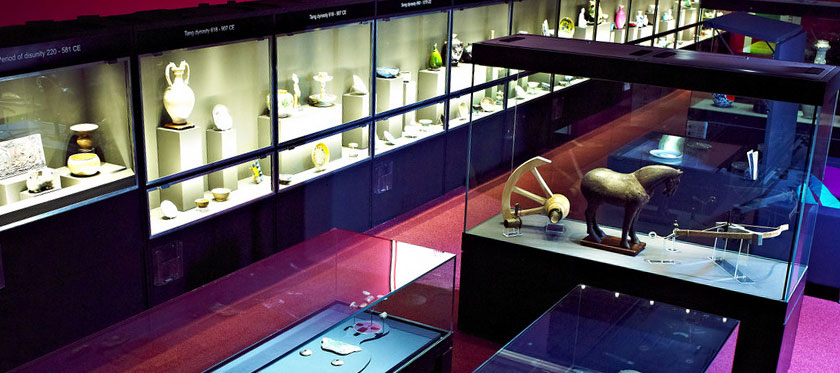
I must admit that my first visit to Durham University’s Oriental Museum was not wholly instigated out of my own free will. As part of the assessment for my Objects of Desire: Oriental Art and its Histories module (which I thoroughly recommend for any prospective History of Art students), I am required to choose an artistic artefact from the Oriental Museum, research it and make a short video documentary detailing the story behind it. The prospect of the uphill trek to the museum, which is situated next to Teikyo University, opposite Van Mildert College, did cause me to postpone the trip for several days, but last Friday, the shining sun and the thought of having finished my lectures for the week inspired me to finally make the journey (which is really not that long, about 15 minutes from the Science Site.)
On arrival at the Oriental Museum I was met with an instant sense of ease and tranquillity which, as I began to wander around, seemed to alleviate the stress of having a million things to do following the first week of a new term. What was also very refreshing about the Oriental Museum was its very open and clear layout which had its exhibits laid out over four open levels making it easy to locate the area of your interest. Also, each object has a concise and informative summary to give an insight into its historical and cultural background.
As for choosing the object for my coursework, this proved to be a much more difficult task than I had anticipated. Never did I expect to find such an extensive array of fascinating artefacts from both ancient and modern Eastern artistic culture. In fact the objects on display came from a whole host of countries including China, Egypt, Himalayas and Central Asia, India and South Asia, Japan, Korea, Near East, Middle East and South East Asia. While the museum houses a multitude of beautiful objects some highlights for me were a pair of Japanese coffee cups and saucers dating from the Meiji/Taisho era (1868–1926 A.D.) which were very finely and intricately hand-decorated with scenes from lush Japanese nature, and a Ming Dynasty porcelain wine ewer depicting a scene of family serenity in the trademark white and indigo Ming decoration.
All the exhibits in the Oriental Museum are well worth a look but the Malcolm MacDonald Gallery is definitely a must. This collection consists of a very impressive selection of artefacts from various Chinese dynasties including the Song, Ming, Qing and even some examples of Neolithic Chinese pottery. Furthermore, there is always a reason to keep going back to the Oriental Museum, which often hosts temporary exhibitions, most recently the ‘Off the Wall: the art of the Japanese Movie Poster’ exhibition, a display of Durham University’s collection of posters from legendary Japanese cinema.
The Oriental Museum has certainly done a great job of making sure all its visitors have the best experience possible during their trip. As well as a friendly greeting at reception, where I was given some very helpful guidance and a plan of the layout of the museum, there are plenty of sofas and chairs dotted all over the museum where one can sit and contemplate in complete comfort. Moreover, the museum is committed to involving families in their work and frequently hold events where parents, children and friends can physically engage with oriental history and culture. What’s more is that there is also a delightful little gift shop to browse through on your way out, as well as a sweet and petite café where you can enjoy a coffee and a snack while reflecting on your memorable visit.
Although I initially made this trip out of necessity, I must say that I found my visit very enjoyable, not to mention extremely insightful and interesting. I would strongly recommend an Oriental Museum trip as a relaxing yet stimulating break from studies which is FREE (!) for all students.
Free entry also applies to Friends of the museum, Durham University staff, infants and for members of the Armed Forces, Museums Association and Art Fund.
Other prices:
£1.50 for adults
75p for over 60s and children over 5
£.3.50 for a Family ticket (2 adults and 3 children).
Opening times:
10am – 5pm from Monday to Friday
12pm – 5pm on Saturdays, Sundays and Bank Holidays.
